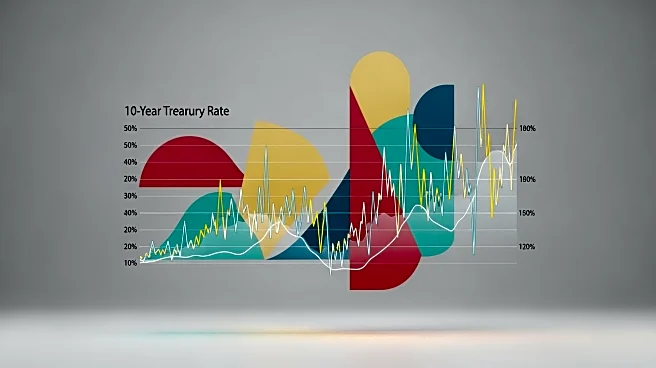What's Happening?
The U.S. bond market, with $28.9 trillion in publicly held debt, is a cornerstone of both domestic and global finance. Treasuries are considered among the safest investments due to their reliability and the dominance of the U.S. dollar in international
trade. However, rising public debt, recurring debt ceiling brinksmanship, and economic policy instability threaten to undermine confidence in the system. This uncertainty can lead to higher Treasury yields, increasing taxpayer costs for interest payments and borrowing costs across the economy. The interaction between U.S. fiscal policy, growing public debt, and the broader economy is closely monitored, with concerns about the long-term impacts of continued high levels of borrowing.
Why It's Important?
The national debt's trajectory has significant implications for the U.S. economy and financial markets. Higher Treasury yields can increase borrowing costs for households, businesses, and government entities, potentially slowing economic growth. The share of taxpayer dollars allocated to interest payments is rising, which could limit government spending on public programs. Investor confidence in U.S. creditworthiness is crucial for maintaining low borrowing costs and economic stability. The bond market's response to fiscal policy decisions can influence interest rates and inflation expectations, affecting economic activity across various sectors.
What's Next?
Efforts to stabilize and reduce the national debt could ease borrowing costs and bolster confidence in U.S. bonds as a stable investment. Policymakers may need to consider fiscal strategies that address deficit concerns and promote sustainable economic growth. The Congressional Budget Office's projections highlight the need for long-term planning to manage interest costs and ensure fiscal sustainability. Potential reactions from investors and financial institutions will be closely watched as fiscal policy evolves.
Beyond the Headlines
The ethical and legal dimensions of fiscal policy decisions may become more prominent as stakeholders consider the implications of rising debt levels. Long-term shifts in investor behavior and global perceptions of U.S. economic stability could influence the role of the dollar as a reserve currency. The balance between fiscal responsibility and economic growth will be a key consideration for policymakers and financial markets.















